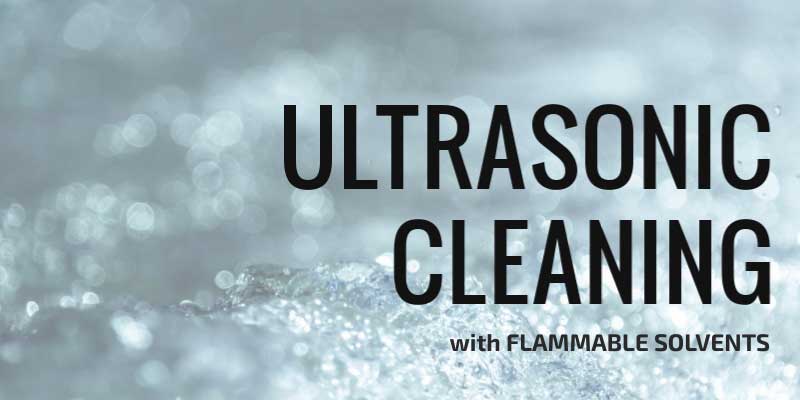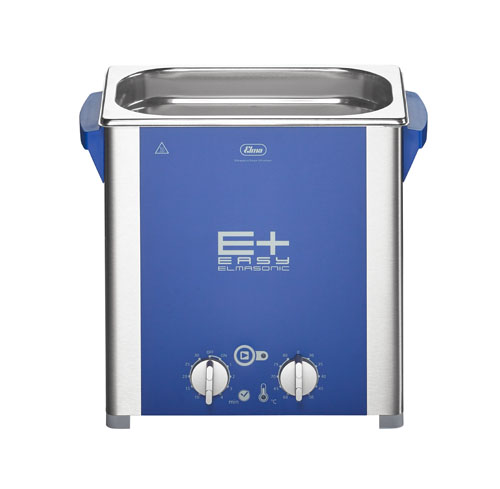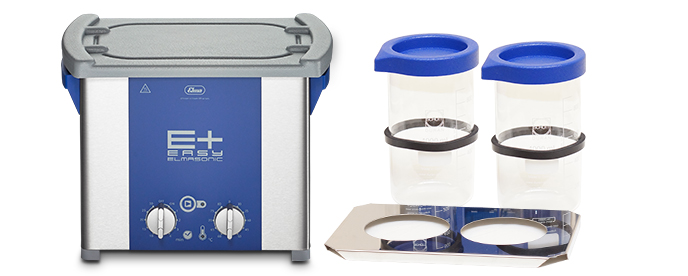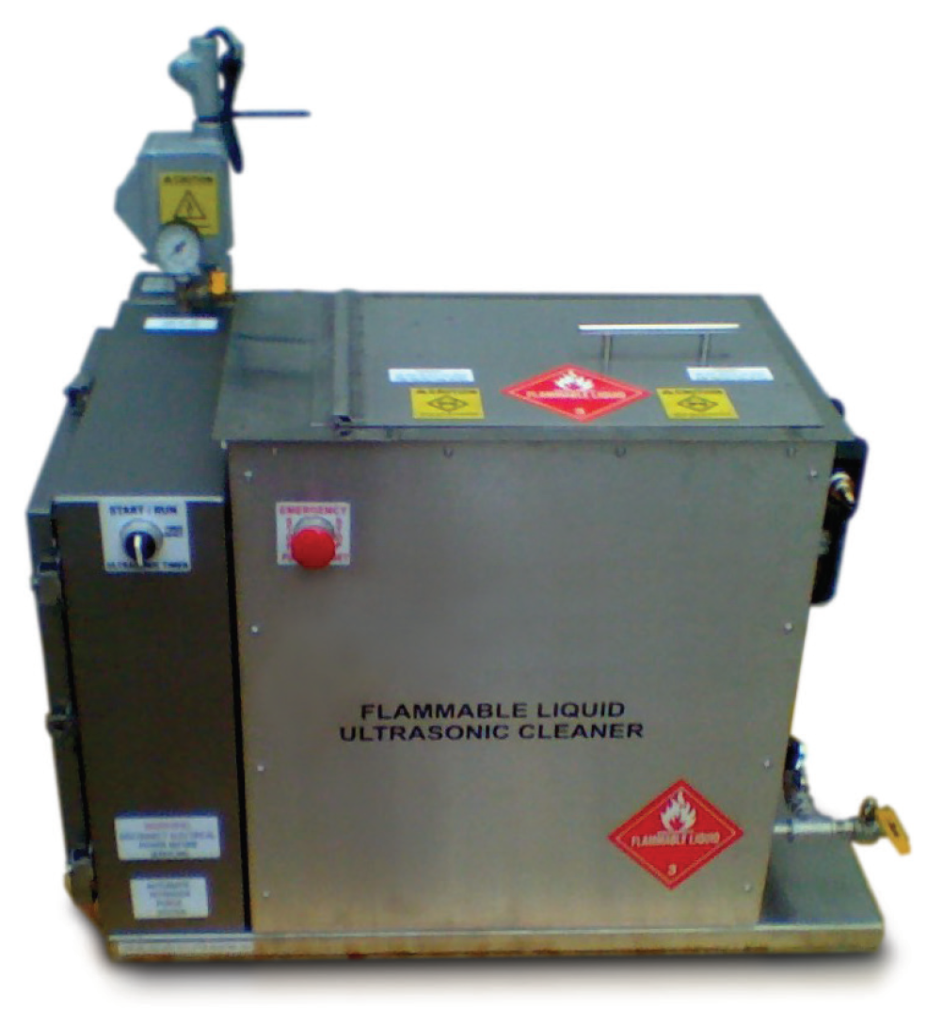
Using Acetone Solvent as an Ultrasonic Bath
Acetone, a solvent and thinner available in paint and hardware stores, carries on its container a warning that it is extremely flammable and quickly evaporates. These two characteristics are always important to users but particularly important when acetone solvent is used as a degreaser in ultrasonic bath for residue-free removal of contaminants. This post provides information on the safe use of acetone solvent as an ultrasonic bath.
But first, some background.
Why Caution is Critical with Acetone
Acetone and similar solvents such as toluene and IPA are characterized by relatively low flash points.
A flash point is the temperature at which a particular organic compound such as an acetone cleaner gives off sufficient vapor to ignite in air when given an ignition source. And as noted above, acetone evaporates quickly.
The American Chemical Society publishes a table of common organic solvents that includes flash points. Acetone’s flash point is given as-20⁰C (-4⁰F).
Because of its low flash point an acetone solvent creates what is defined by OSHA as a hazardous location wherever it is used.
This is because fumes or spilled solvents can be ignited by extraneous sources. These include, among other sources, electrical equipment, associated wiring as well as an ultrasonic cleaner not certified as explosion proof.
How to Use Acetone as an Ultrasonic Bath
Here are two options offered by Tovatech for safely using acetone solvent as an ultrasonic bath (along with recommended safety practices):
1. Isolate the Acetone Solvent from the Environment
This may be the most practical solution if you use acetone for relatively small parts on an occasional basis and are not prepared to invest in specially designed equipment.
It uses conventional benchtop ultrasonic cleaners such as the Elmasonic E Plus, and P series along with common safety precautions as described later in this post.
In this instance you can use tap water with a surfactant such as a few drops of dishwashing liquid in the ultrasonic cleaner’s tank.
Before proceeding further, remember to degas the solution by running the cleaner for about 10 minutes without a load or, if so equipped, the unit’s degas function.
Carefully place the parts in a flask or beaker and add just enough acetone (or another flammable solvent) to ensure they are fully immersed.
You can also use small, fine mesh screen baskets containing the parts and set into a beaker. In this case the small baskets must be such that you can cover the beaker loosely to minimize the vapor escaping during the cleaning process.
Ultrasonic beaker kits available from Tovatech are a great solution for this application.
Flasks can be fixed into position in a standard mesh basket using flask clamps. Fine mesh baskets and flask clamps are available in a number of sizes.
In either case, the bottom 1-2 inches of the containers should be immersed in the water. The ultrasonic energy will penetrate the glass walls and cavitation action will occur in the acetone cleaning solvent.
At the conclusion of the process carefully remove the parts which, when dry, will be residue free.
Important Note: When cleaning using this option operations should be carried out with sufficient ventilation to prevent solvent vapor accumulation.
The ventilation system must ensure that the flammable vapor cannot reach an ignitable concentration near the ultrasonic cleaning equipment. Always check local fire regulations for the maximum quantity of any flammable solvent used as an ultrasonic bath.
2. Use Specially Designed Explosion-Proof Ultrasonic Cleaners
For large scale operations the SOL XP explosion-proof ultrasonic cleaning systems in 2, 4, 6, 9, 15 and 33 gallon tank capacities are available from Tovatech. These are designed to be used with low flash point volatile cleaning solvents such as acetone.
The 40 kHz ultrasonic frequency SOL XP equipment is compliant with all Class I, Division 1 (CID1) code and zone requirements.* Different only in tank dimensions and capacities they can be fitted with a cooling jacket around the upper tank perimeter to capture solvent vapor and reduce odor.
Also available is an optional air driven pump and purification system to reduce handling and improve product quality. This provides continuous solvent purification thereby extending its useful life.
The SOL XP explosion-proof ultrasonic cleaners have Intertek ETL Certification and are shipped with a remote electrical panel to be located outside the CID1 envelope. Units are nitrogen inerted for additional fire protection.
Other included and optional features can be found on Tovatech’s SOL XP flammable liquid ultrasonic cleaning systems web page.
Other Safety Tips for a Flammable Ultrasonic Bath
While we provide in this post two options for using acetone and other flammable solvents as an ultrasonic bath, operators must be sure that several safety precautions are in play regarding the use and placement of these cleaners.
This is because vapors and solvent are open to the immediate environment. Always check with plant safety personnel and local public safety officials. As a start follow these simple safety steps:
- Acetone solvent evaporates quickly. When using the SOL XP be certain that the tank is at least half full as lower levels can damage the ultrasonic transducers.
- Do not clean plastic-containing parts unless they are acetone-resistant
- Provide code-approved ventilation such as a fume hood to draw off explosive vapors and protect personnel
- All electrical fixtures in proximity to the unit(s) must meet explosion-proof standards
- Operating personnel must not carry cell phones or other electronic devices that could cause a spark
- Use special precautions in the disposal of spent acetone solvent
- Bottom line: keep any source of ignition remote from the cleaning area
Please contact the professionals at Tovatech for assistance on selecting and using an ultrasonic cleaner for acetone or other volatile solvents.
*For details see these specifications on hazardous locations.




